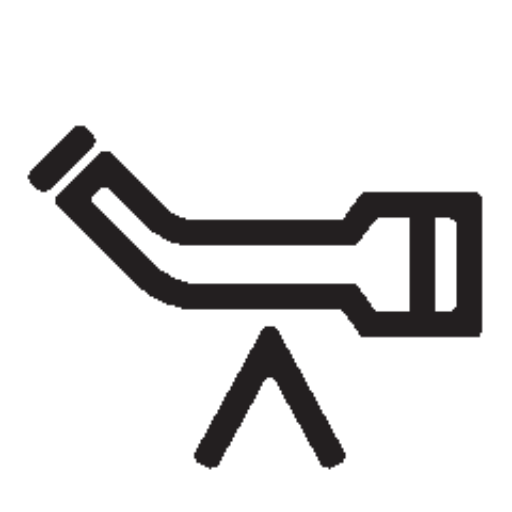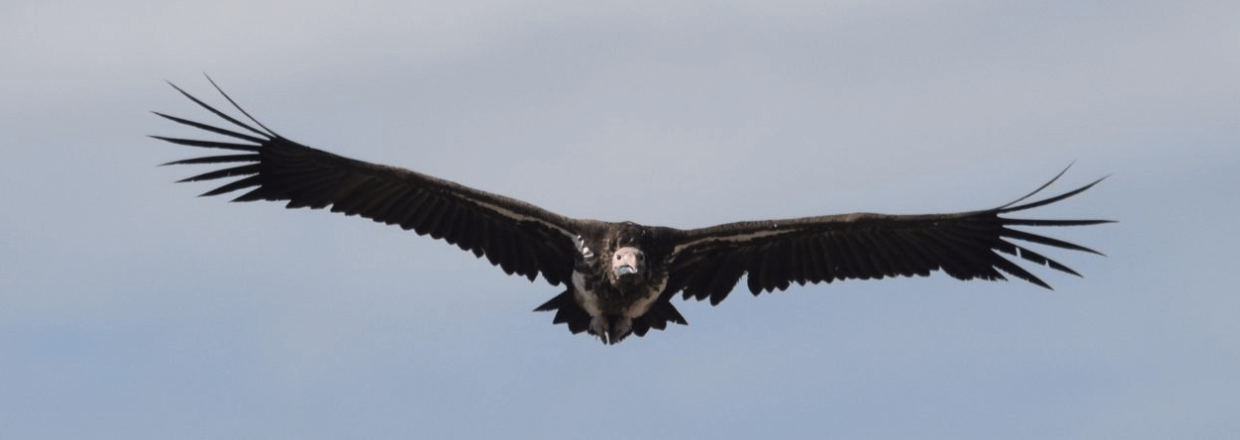Spektiv.org provides all you need to know on spotting scopes: advice on the best available devices and what to look for when buying a spotting scope.
What is a spotting scope?
A spotting scope is a telescope for the purpose of observation. It is usually an optical instrument with high power magnification. Magnification is created through mechanical optics instead of digital zoom.
The name spotting scope comes from the word “perspective” and means as much as “to look through”.

Unlike binoculars, the objective consists of a monocular telescope. The magnifications are often in a very powerful range. Therefore a tripod is often used when using a spotting scope.
Spotting scopes can also be defined as “optical devices for observation”.
Unlike many compact cameras, the imaging performance is not achieved via a digital zoom, but via the alignment of the lenses built into the spotting scope. This means that the image of the observed object is created mechanically, via purely physical alignment.
Among other things, the quality and workmanship of the lenses used is decisive for the resulting image.
Characteristic for spotting scopes is the high magnification factor.
Binocular vs. Spotting Scope
While binoculars are also used for observation and magnification at long distances, the magnification power of spotting scopes is much higher than that of binoculars.
Binoculars usually offer magnifications up to a factor of ten (tenfold magnification). Spotting scopes of the top manufacturers succeed in razor-sharp imaging even in a dimension of 80-fold (eighty-fold) magnification. Spotting scopes thus increase the performance of binoculars by a factor of almost ten.
In addition, a characteristic of spotting scopes today is that they usually consist of three major components when used in the field:
- The lens (depending on the type, incl. installed prisms (mirror)
- The eyepiece (lenses that are adjusted to each other, regulating the magnification power)
- The tripod (to adjust the working height of the spotting scope to the user)
The third component is certainly the most controversial, since, for example, hunters or sport shooters who work lying down with a spotting scope can do without tripods. For users from the field of nature observation (ornithology or other nature observations) tripods in combination with spotting scopes are usually irreplaceable.
How does a spotting scope work?
The magnification factor of spotting scopes is usually adjustable by the user. Thus, a magnification range – for example, between 25- and 60-fold magnification – can be selected and focused.
The flexibility of spotting scopes is mostly due to two dimensions mentioned: Adjusting magnification and adjusting focus. However, there are also eyepieces for spotting scopes that are fixed focal lengths. Here the magnification factor is not adjustable. As known from lenses used in photography, fixed focal lengths usually achieve clearer images, as they are usually faster (more translucent) than zoom eyepieces. In other words: The eyepieces of a fixed magnification are perfectionated for a specific zoom.
Today, modern spotting scopes usually come in two versions: with a straight view or with an angled view. The functionality hardly differs, only the prisms in the objective are arranged differently to guide the image towards the eyepiece. Among users, however, there are different preferences regarding angled and straight viewing.
Angled view or straight view?
Both variants have their advantages, so that the respective user is spoilt for choice. With straight viewing, you do not have to tilt the head forward. Instead, you can comfortably look straight through the eyepiece if the device is mounted on the tripod at eye level. However, this is exactly where the crux lies.
Especially if you want to set up and use the device quickly (e.g., because an interesting object is moving in the observation area), the setup and alignment can take crucial seconds longer and prevent the observation.
With devices with angled view, these crucial seconds can be made good, because the head tilt or body bending at the same time compensate for deficits of fast setups. The bottom line is that you can observe faster than with devices with straight viewing.
However, some users find it strenuous to tilt the head permanently to the angled view (neck stiffness) during long observations. There is no solution that suits all users, so in the end everyone must decide for themselves whether they want a spotting scope with angled or with straight viewing.
Spotting scope in use
Spotting scopes are used by basically three different groups of people.
- One group of people who use spotting scopes are nature observers, especially birdwatchers or ornithologists
- A second group in which spotting scopes are often used is that of hunters
- The third group is made up of sport shooters.
Furthermore, spotting scopes are also used for civilian and military surveillance. For example, in the surveillance of airspace. However, aircrafts can be tracked better with a flight radar than with a spotting scope.
The field of surveillance plays no role for the information on this page. All advice and recommendations from spektiv.org are aimed at private users.

Nature watchers use spotting scopes primarily to clearly identify or observe shy animals or birds from a great distance.
Spottting scopes are used on observation towers in nature. Whether wolves or wintering waders in areas that are difficult to access: A spotting scope helps nature observers to determine which species occur in certain areas and enables unique nature experiences.
Sport shooters use spotting scopes for sporting purposes to clearly address their target when shooting and to improve their sporting performance on the shooting range. Since the distances on the shooting range often lag those of nature observers, the magnification power relevant for sport shooters is usually lower than for amateur ornithologists.
Hunters use spotting scopes to target game and to increase their hunting success. Whether on the raised hide or on the road, there are special spotting scopes for every need, which meet special requirements.
Where to buy a spotting scope?
Spotting scopes can now be purchased from a wide variety of retailers.
The range extends from discounters such as Lidl or Decathlon to specialist stores.
Often spotting scopes are in the range of dealers who have specialized in photographic or hunting equipment. In addition to numerous specialist dealers, there are also numerous online shops that offer spotting scopes for sale. In addition to the usual suspects such as Amazon, there are shops such as Optik-Pro, which are more focused on optics and provide better services.
Spotting Scope Manufacturer
Manufacturers of spotting scopes include companies such as:
But Nikon, a manufacturer better known from photography, also produces spotting scopes.
These manufacturers are spotting scope producers from a rather high-priced segment.
Sometimes spotting scopes can be found at lower priced suppliers such as those sold through chain stores like Lidl , Decathlon or Tchibo. As a rule, the inexpensive versions sold through chain stores are less powerful in imaging and of lower quality.
For ambitious users the imaging performance of devices sold in chain stores is usually too weak. They do not meet high demands for observations.
When choosing a suitable spotting scope, you should pay attention in advance to what you want to use the device for.
Spotting Scopes and Digiscoping
Besides observing events in nature, spotting scopes are increasingly used to take photographs.
This type of photography is called digiscoping.

Often spotting scopes allow the observer to get much closer to the object than would be possible with binoculars.
Various suppliers of spotting scopes also increasingly offer the possibility of connecting digital cameras from other manufacturers – as well as from their own production – to the spotting scope. This is how spotting scopes become a powerful tool to take photographs with high magnification.
However, depending on the existing equipment, upgrading to digiscoping can be difficult. The author of these pages speaks from experience: Four different solutions were tested in combination with a Zeiss Conquest Gavia spotting scope and a Nikon DSLR D5300. In the end, none of them met the expectations in terms of handling and image quality.
What to look for when buying a spotting scope?
It is important for every user to narrow down the intended use in advance. Ask yourself: Is the device used frequently or exclusively when travelling? Then the packing size and weight should be right. If it is intended to be used exclusively for ornithological observations in domestic latitudes where the target birds are located at great distances, the corresponding magnifications should not be a problem for the spotting scope but compromises on weight can be made.
This website provides information to help you find a suitable spotting scope.
Both the differences in quality and the differences in price vary greatly.
Cheap spotting scopes can be purchased for as little as 50,00 £ (often depending on promotions of the above-mentioned retail chains).
For high-quality and high-priced devices, several thousand Pounds can be spent quickly.
Devices from the mid-range (in a price range of 400,00 £ to 1.000,00 £) are often suitable for beginners.
Those who are still undecided but want to get to know a spotting scope could, for example, first purchase a low-priced spotting scope and then define clear expectations for a high-priced device. As so often, the market offers a suitable offer for every interested party.
One interesting fact on spotting scope prices of top quality is the fact that if maintained well, they are not suffering from a quick loss of value. Top of the range devices are sold second hand almost for the same price they have cost originally.

